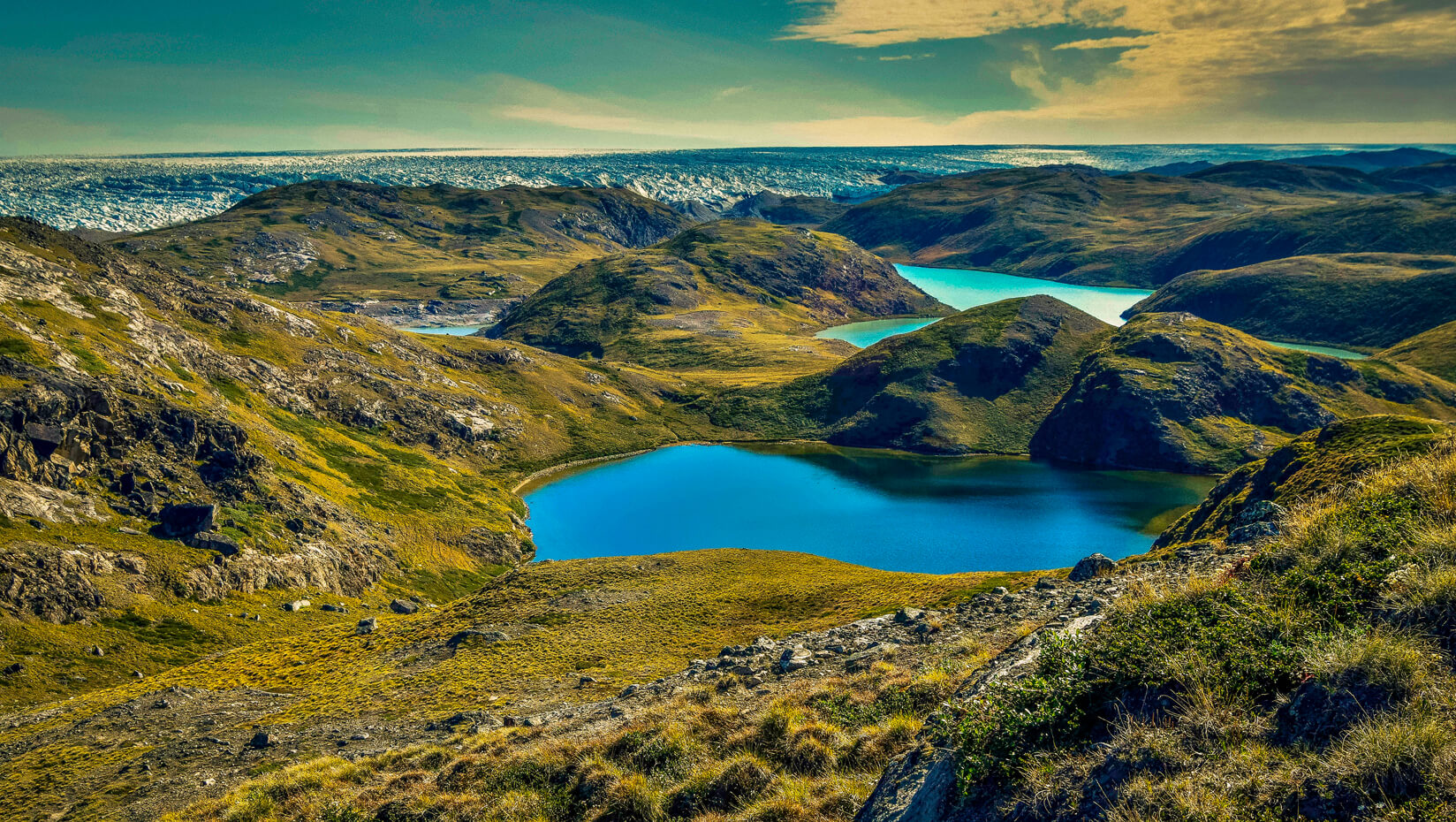
Biogeochemical links across Greenland key to understanding Arctic
The Kangerlussuaq region of southwest Greenland is a 3,728-square-mile corridor stretching from the ice sheet to the Labrador Sea. In this area near the top of the world, landscape and ecosystem diversity abounds. Flora and fauna range from microbes in the ice sheet to large herbivores — caribou and musk oxen — living on the tundra, and aquatic plants and animals in the diverse bodies of water, including silt-filled rivers, ponds, lakes and rushing mountain streams.
The varied terrestrial and aquatic ecosystems in this, the country’s largest ice-free region, receive water, geological material, organic carbon and nutrients from the glacier surface — an integrated system that has been undergoing substantial change since 2000 due to rapid regional warming.
In a recent article in the journal BioScience, “The Arctic in the 21st Century: Changing Biogeochemical Linkages Across a Paraglacial Landscape of Greenland,” researchers from seven countries, including a team from the University of Maine, detail the ecosystems in southwest Greenland and explore how rapidly changing environmental conditions may alter this landscape, including the flow of water, carbon and nutrients.
Their perspective, the outgrowth of a 2015 international workshop in the U.K., highlights the importance of looking across landscape ecosystems and time periods — including the paleoecological record — to understand the interrelated, dynamic processes affecting areas such as the Arctic that are expected to continue to warm.
Funding for the research collaboration came from the U.K.’s Natural Environmental Research Council and the U.S. National Science Foundation.
Based on how the Arctic’s diverse geomorphic and ecological systems have responded to the current warming trend, shifting temperature and precipitation levels have the potential to change such aspects as mammal size and abundance, vegetation cover and type, and carbon and nutrient flows across systems, according to the researchers.
“Now is the time to decipher how Arctic landscapes respond to rapid environmental change so we can better predict how continued, rapid warming over the 21st century will alter this ecosystem,” says Jasmine Saros, associate director of the University of Maine Climate Change Institute and one of seven UMaine professors conducting research in the Arctic in recent years.
Saros, who co-coordinated the 2015 workshop, is one of the 27 authors of the journal article, led by N. John Anderson at Loughborough University. Saros led the UMaine research team on the project that included postdoctoral research associate Robert Northington, and graduate students Benjamin Burpee and Rachel Fowler.
In the last two decades, the Arctic has seen some of the most rapid environmental changes on Earth. Synthesizing two decades of multidisciplinary research in the Kangerlussuaq region — focused on changes in water, carbon, nutrients and other elements, and anthropologic influences such as atmospheric pollution — highlights the complex linkages among glacial, proglacial, aquatic and terrestrial systems in the deglaciated landscape, the researchers write.
“Regional warming is driving increased seasonal melt on the ice sheet, altering phenology and changing landscape hydrology,” according to the researchers. “Some of these changes are interacting in unpredictable ways (meltwater pulses and dust production), whereas others may have cascading effects, such as altered herbivore densities on tundra vegetation and soil (carbon) dynamics.”
By linking numerous paleoecological records from this region with contemporary measurements, researchers hope to obtain a holistic and “more rigorous definition of natural background conditions against which 21st-century change can be compared.”
Contact: Margaret Nagle, 207.581.3745
